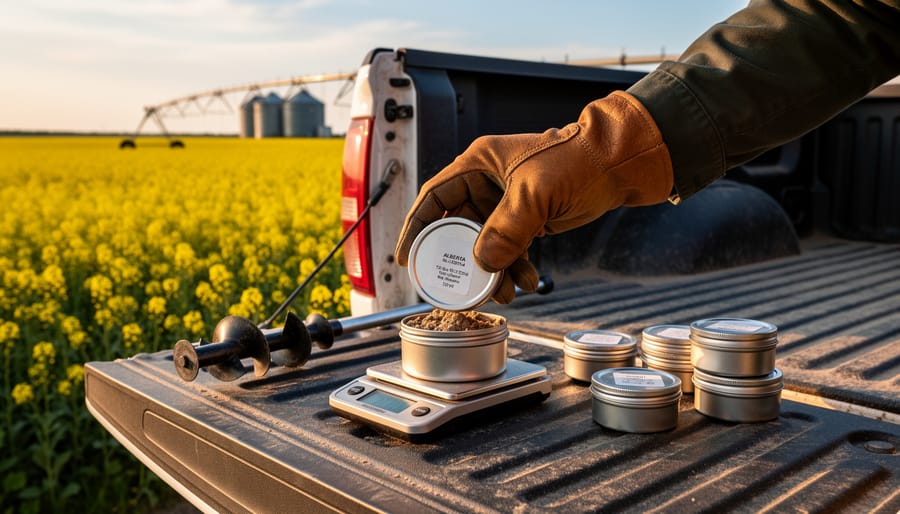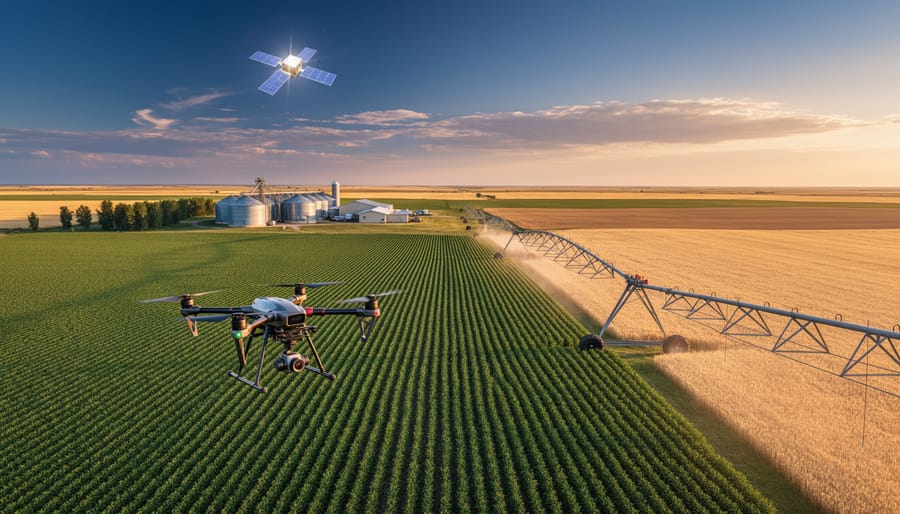Implement drip irrigation systems to precisely target crop roots, reducing evaporation and runoff. Invest in soil moisture sensors and weather monitoring technologies to optimize irrigation scheduling based on real-time data. Adopt conservation tillage practices like no-till or minimal tillage to improve soil structure, increase water infiltration, and minimize erosion. Integrate cover crops and crop rotations to enhance soil health, reduce water loss, and improve water management efficiency.
Drip Irrigation: Precision Watering for Thirsty Crops
Drip irrigation is a game-changer for water conservation in agriculture, delivering precise amounts of water directly to plant roots. By minimizing evaporation and runoff, this method can reduce water usage by up to 60% compared to traditional irrigation techniques. Drip systems use a network of pipes, valves, and emitters to slowly release water at the base of each plant, ensuring that moisture reaches the root zone without oversaturating the soil.
To implement drip irrigation effectively, it’s crucial to assess your crop’s water requirements and design a system that matches those needs. Consider factors such as soil type, plant spacing, and climate when selecting components like tubing diameter, emitter flow rate, and filtration equipment. Proper installation is key—ensure that pipes are laid out efficiently and emitters are placed at the correct distance from plant stems.
Regular maintenance is essential for optimal performance. Inspect your system frequently for leaks, clogs, or damage, and flush the lines periodically to prevent buildup. Monitor soil moisture levels using sensors or manual checks, adjusting watering schedules as needed based on weather conditions and plant growth stages.
By embracing drip irrigation, Canadian farmers can significantly reduce their water footprint while maintaining healthy, productive crops. This precision watering method not only conserves a precious resource but also saves time and labor, lowers energy costs for pumping, and can even improve crop quality and yields. With careful planning and maintenance, drip irrigation proves that sustainability and profitability can go hand in hand on the modern farm.

Mulching Magic: Lock Moisture in Your Soil
Mulching is a powerful technique for locking moisture into your soil, reducing evaporation and improving water retention. In Alberta’s climate, organic mulches like straw, wood chips, and shredded leaves are excellent options. These materials break down slowly, enriching the soil with nutrients while providing a protective layer against the elements.
To maximize the benefits of mulching, apply a layer about 2-3 inches deep around your crops, taking care not to pile it against plant stems or tree trunks. This depth provides optimal insulation and moisture retention without impeding water infiltration or air circulation. Replenish the mulch as needed throughout the growing season to maintain a consistent cover.
Mulching not only conserves water but also moderates soil temperature, suppresses weed growth, and prevents soil erosion. By reducing the need for frequent irrigation and cultivation, mulching saves time and resources while promoting healthier, more resilient crops.
For best results, source mulch materials locally to minimize transportation costs and support the circular economy. Many agricultural byproducts, such as straw from grain crops or wood chips from pruning, can be repurposed as mulch. By implementing effective mulching practices, Alberta farmers can significantly improve water use efficiency and build more sustainable agricultural systems.


Harnessing Tech: Smart Sensors for Wise Watering
Soil Moisture Sensors: Your Underground Allies
Soil moisture sensors are invaluable tools for Alberta farmers looking to optimize irrigation and conserve water. These underground allies come in various types, each with its strengths. Volumetric sensors measure the water content of soil, while tensiometers gauge the force roots must exert to extract water. Placement is key – sensors should be installed at multiple depths in representative areas of the field, considering soil type and crop root zones. Aim for depths of 10, 20, and 40 cm to capture moisture levels throughout the root zone.
Interpreting sensor data is an art and a science. Look for trends over time rather than fixating on individual readings. Combine sensor data with visual crop monitoring and Alberta-specific evapotranspiration rates to make informed irrigation decisions. As Tom Jensen, an Alberta irrigation specialist, advises, “Soil moisture sensors are a tool, not a magic bullet. Use them to complement, not replace, your instincts as a farmer.”
Remember, optimal moisture levels vary by crop and growth stage. Consult Alberta Agriculture’s crop-specific moisture guidelines to tailor your irrigation strategy. With proper installation, interpretation, and action, soil moisture sensors can be your underground allies in the quest for water conservation and thriving crops.
Weather Stations: Forecasting for Efficient Watering
On-farm weather stations are a game-changer for precision irrigation in Alberta. By collecting localized data on temperature, humidity, wind speed, and rainfall, these systems provide real-time insights to guide watering decisions. Weather stations can be integrated with soil moisture sensors and irrigation controllers to automate watering based on actual crop needs. This reduces water waste from over-irrigation and ensures crops receive optimal moisture levels. Alberta farmers who have implemented weather stations report water savings of up to 30% while maintaining or improving yields. With the ability to forecast heat waves, cold snaps, and dry spells, weather stations help farmers anticipate irrigation demands and plan accordingly. As climate patterns become more unpredictable, investing in on-farm weather stations is a proactive step towards more efficient and sustainable water management in Alberta agriculture.
Honing Your Irrigation Scheduling Skills
Proper irrigation scheduling is a critical component of water conservation in agriculture. By tailoring your irrigation practices to the specific needs of your crops, growth stages, and environmental conditions, you can optimize water use efficiency and minimize waste. In Alberta, it’s essential to consider factors such as soil type, climate, and crop water requirements when developing an irrigation scheduling plan.
Start by assessing your soil’s water-holding capacity and monitoring soil moisture levels regularly. This can be done using soil moisture sensors or by manually checking the soil. Aim to maintain soil moisture within the optimal range for your specific crops, avoiding both over-watering and water stress.
Consider the growth stages of your crops when scheduling irrigation. During critical growth periods, such as flowering and fruit development, crops may require more frequent watering. Conversely, during early growth stages or as crops approach maturity, water requirements may be lower.
In Alberta, it’s crucial to account for the region’s unique climate and weather patterns. Monitor local weather forecasts and adjust your irrigation schedule accordingly. During hot, dry spells, your crops may need more frequent watering, while cooler, wetter periods may require less irrigation.
Collaborating with local agricultural extension services, such as Alberta Agriculture and Forestry, can provide valuable insights and recommendations specific to your area. They can help you develop an irrigation schedule that takes into account your crops, soil, and climate, ensuring optimal water use efficiency.
By honing your irrigation scheduling skills and adapting to the specific needs of your crops and environment, you can significantly reduce water waste and promote sustainable agriculture practices in Alberta.
Embracing Drought-Tolerant Crops and Cultivars
In Alberta’s semi-arid climate, selecting drought-tolerant crops and cultivars is a key strategy for conserving water in agriculture. These resilient plants have adapted to thrive in water-scarce conditions, requiring less irrigation and reducing the strain on limited water resources. Crops such as durum wheat, barley, and pulses like lentils and chickpeas have proven to be well-suited to Alberta’s climate, with their deep root systems and efficient water uptake mechanisms.
Farmers who have embraced drought-tolerant varieties report significant water savings without compromising yield or quality. For example, a family farm near Lethbridge has successfully transitioned to growing triticale, a wheat-rye hybrid that requires 20% less water than traditional wheat varieties. By carefully selecting crops based on their water requirements and adaptability to local conditions, Alberta farmers can optimize their water use efficiency and build resilience in the face of climate change.
Research institutions and seed companies in Alberta are actively developing and promoting drought-tolerant cultivars tailored to the region’s unique challenges. Collaborations between farmers, researchers, and industry partners have led to the introduction of innovative varieties that combine water-saving traits with desirable agronomic characteristics. As more farmers adopt these climate-smart crops, they contribute to a growing community of stewards committed to conserving Alberta’s precious water resources for future generations.
Conclusion
In conclusion, water conservation methods such as drip irrigation, cover cropping, mulching, conservation tillage, and rainwater harvesting offer significant benefits for Alberta farmers. By adopting these practices, farmers can reduce water waste, improve soil health, increase crop yields, and lower operational costs. The Organic Farming, The Canadian Way platform is dedicated to supporting farmers in implementing these sustainable techniques through educational resources, expert guidance, and a supportive community of like-minded agricultural professionals. We encourage all Alberta farmers to explore these water conservation methods and take advantage of the support available through our platform. Together, we can work towards a more sustainable and resilient agricultural future for our province and beyond. By embracing these practices, farmers not only contribute to the preservation of our precious water resources but also position themselves for long-term success in an increasingly challenging climate. Let us unite in our efforts to conserve water and build a thriving, sustainable agricultural community in Alberta.











